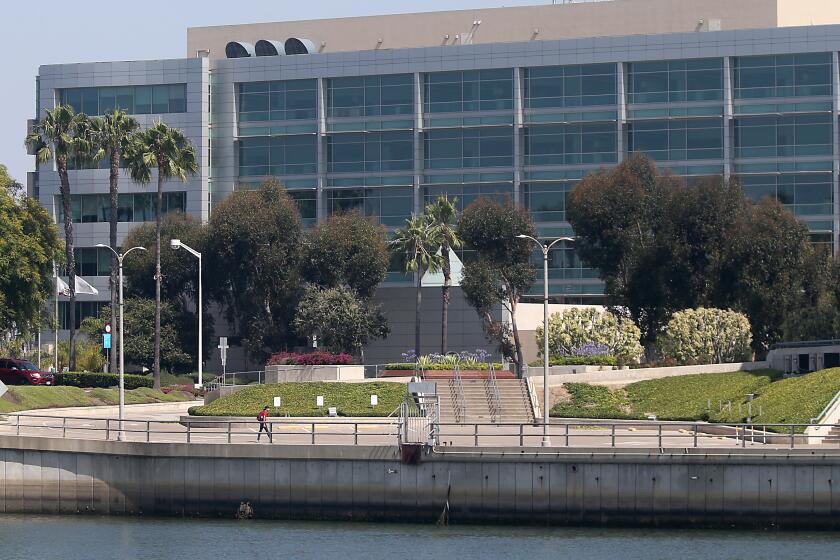State’s Teenage Suicide Rate Declines, So How Come No One Knows Why?
The vital statistics couldn’t be more clear and hopeful. A quarter century ago, in the early 1970s, 100 Los Angeles teenagers, on average, committed suicide each year. Another 400 annual teenage deaths--of gunshot, drug overdose, asphyxiation, drowning, car crash and other, mostly self-inflicted--were ruled “accidents,” deaths that coroners suspect include undetected suicides.
In the 1990s, in a far larger teenage population, 60 L.A. teens, on average, commit suicide; another 170 die in accidents each year. Drug-overdose deaths have dropped an astonishing 90%. Self-destructive deaths, suicide and accidents alike, are down 50%, dramatically rarer today than among teens 25 years ago.
Teenagers are the leading edge of California’s demise of personal demise. Suicides and self-destructive deaths are down sharply among all ages. In 1996, Californians, once infamous for leaping into the void from the Hollywood sign to the Golden Gate Bridge, had the lowest suicide levels in a century of record keeping.
But “hope” is not an operative concept in modern stereotypes of teenagers. Experts proclaim every adolescent problem is rocketing up. L.A.’s decline in youthful self-destruction wasn’t supposed to happen. Officially, it can’t be happening.
Because California’s decline in suicides was unexpected and unrecognized, no one appears to have studied why it occurred. The decline in suicides and other self-destructive deaths was greater among young people, women and those who used “softer” methods, such as drugs and poisons, than those who chose more violent means, such as guns or jumping. The suicide drop began in urban coastal counties and has now spread to inland and rural areas. New state Center for Health Statistics figures show California’s suicide toll fell by a record 400 from 1995 to 1996 alone, registering declines in 14 of the state’s 15 largest counties.
The fact that California’s population is increasingly nonwhite may play a small, though contradictory, role. African Americans, Asians and Latinos have lower suicide rates, but higher fatal accident rates, than European whites. Furthermore, suicides among nonwhite youths supposedly have been rising rapidly elsewhere in the United States--but fell in California. So racial change does not explain the mystery.
Nor do programs. The suicide decrease began well before the modern prevention efforts of the mid-1980s. However, it may be related to the longer-term efforts of innovative California services such as L.A.’s Suicide Prevention Network, whose crisis lines and counseling programs go back 40 years. Or it could be rooted in unknown, healthy social currents among California’s ever-surprising populations that we need to learn about.
Historically, California has been identified with paradoxical self-obliteration. In 1914, a New York paper smugly cited rampant suicide in “pleasure loving . . . Californian cities;” San Francisco “has the highest suicide rate of all, and is followed by San Diego and Sacramento, and these by Los Angeles and Oakland.”
That was true then, and even more so for the next six decades. In 1970, Angelenos killed themselves at double the national rate; San Franciscans triple. “To say they jumped off the Golden Gate Bridge at the rate of one per month is only highlighting the dramatic,” wrote offbeat historian Curt Gentry in “Last Days of the Late Great State,” his 1969 classic on a culture doomed by psychology and seismology. Hundreds more, he noted, chose “more mundane finales.”
Yet, a quarter century later, in July 1993, the San Francisco Chronicle’s front page would puzzle over “a new kind of mystery . . . deaths that didn’t occur.” The city’s population grew, as did urban distress from homelessness to AIDS, yet suicides dropped from 280 in 1970 to 125 in 1996. Similarly, L.A. County’s population rose by 2.5 million in the last quarter-century, but annual suicides fell by 600. For both, suicide rates are lower today than at any time since records were first compiled in 1900.
Experts’ failure to examine this trend is baffling. In 1981, a state health statistician reported to a legislative hearing, attended by leading authorities, that since 1970, “in the United States suicide rates have increased 35.6% for teenagers 15 to 19, while they have decreased by 30% in California.” The surprised committee chair declared the “good news” meant maybe we should just leave kids alone.
However, many had no use for this good news. In the 1980s, congressional hearings and an American Psychological Assn. investigation revealed that the burgeoning psychiatric-hospital industry had targeted teenagers to fill empty beds in overbuilt facilities. Suddenly, the “epidemic of teen suicide” appeared in hospital ads. Youths were depicted holding guns to their heads, parents weeping over graves. A study of 11,000 California teens in psychiatric treatment found that those with health insurance were committed for twice as long as those without.
Sensitive to parents’ fears that young people might be self-destructing as never before, the California Department of Education consulted leading experts and issued a suicide prevention manual for schools in 1987. “Teenage suicide has risen dramatically in recent years,” it warned--even as health statistics showed that California’s teen-suicide rate had been dropping for 15 years.
By the mid-1990s, L.A.’s teen-suicide rate had fallen to its lowest level since 1965. Yet, local experts solemnly told Time magazine, reporting on two San Pedro deaths, that “suicide rates are rising steadily for teenagers.” The article invoked the usual hyperbole of “crisis.” Surveys claiming “up to 60% of high-school students reported having suicidal thoughts” were blared in the press.
The standard line is that modern teenagers--who, in fact, are far less prone to suicide than adults--are uniquely self- destructive, particularly with drugs. Yet, here are the county coroner’s figures: In 1970, 130 L.A. teenagers died from drug overdoses, including suicides, accidents and everything in between. In 1996, 10. That’s a 92% decline.
This trend is even more surprising because, by all odds, teenage suicides and drug-related fatalities should be rising. Deadlier forms of heroin, cocaine and speed abound. Adults in their 30s and 40s (the parents of today’s teens) display skyrocketing levels of drug abuse, criminal arrest and household violence. Education and future job opportunities are evaporating for the marginal young. Yet, hundreds fewer are killing themselves.
It is exactly because teenage suicide, like adult suicide, is a terrible tragedy that prevention should incorporate rigorous research, not sensational hype. Yet, authorities remain so wedded to anti-youth prejudices that even the most compelling evidence on life and death matters cannot jar thinking in new directions. Other than a few L.A. Suicide Prevention Network veterans, officialdom seems largely resistant to the suggestion that anything could be going right among adolescents. What is truly scary is that today’s political, institutional, media and commercial interests continue to treat young people as little more than an exploitable commodity.
More to Read
Start your day right
Sign up for Essential California for news, features and recommendations from the L.A. Times and beyond in your inbox six days a week.
You may occasionally receive promotional content from the Los Angeles Times.






